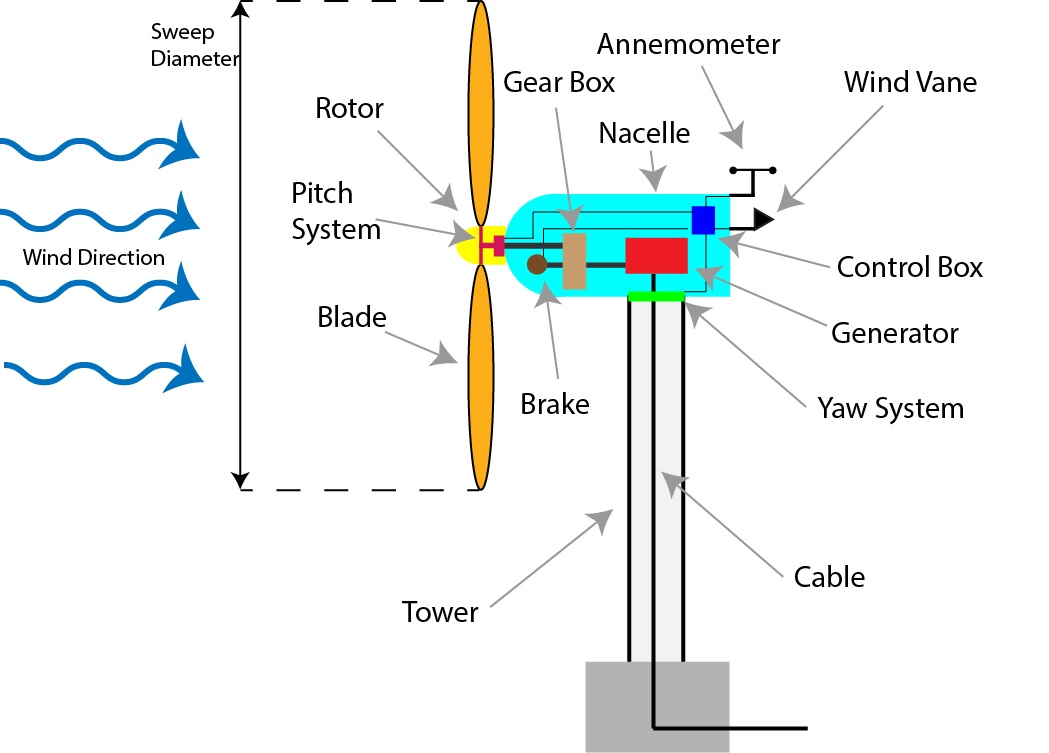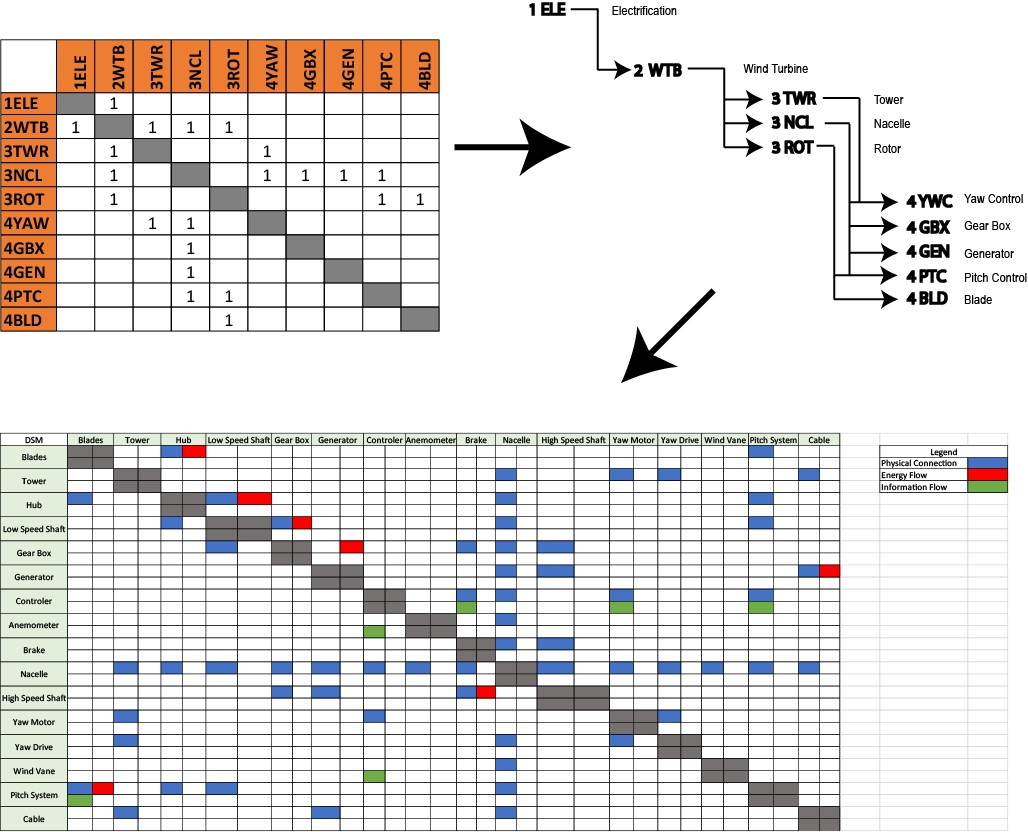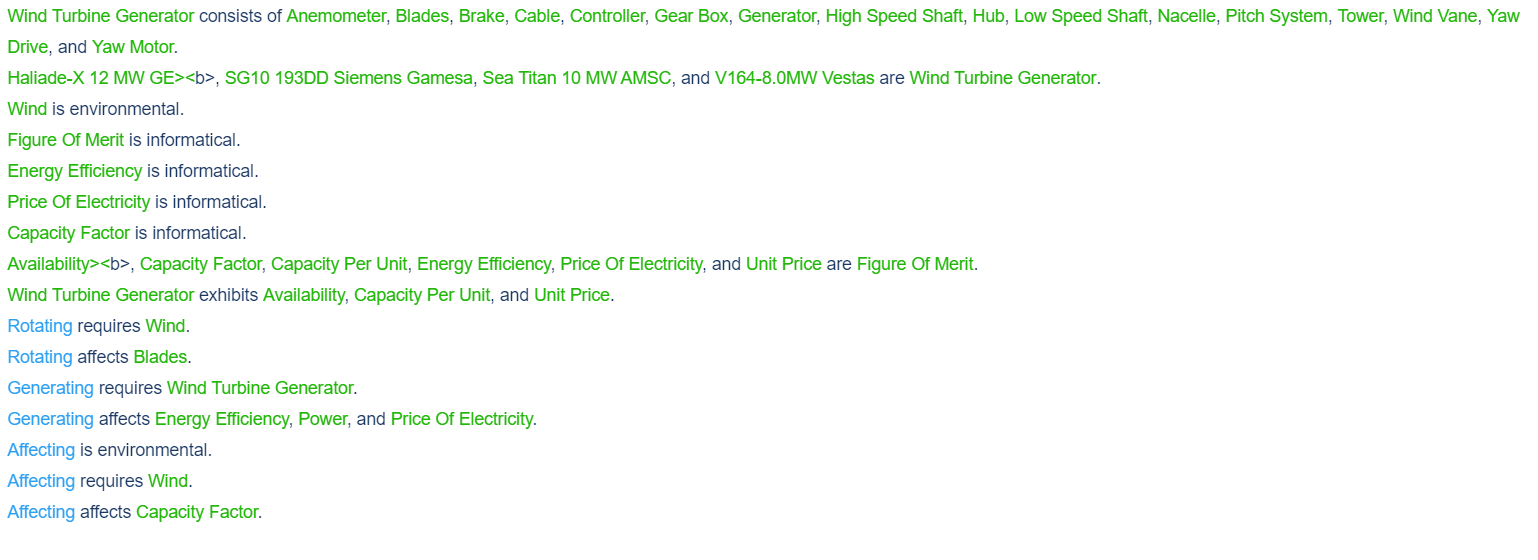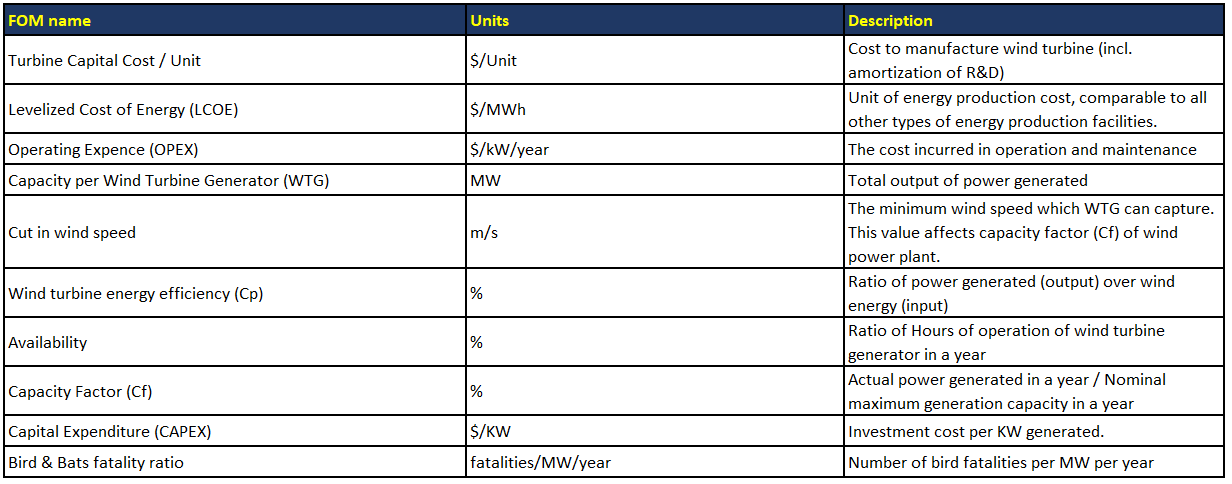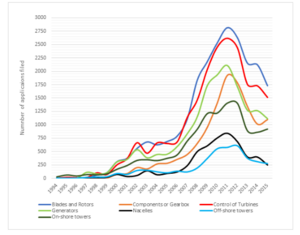Wind Turbine - Energy Harvesting
Technology Roadmap Sections and Deliverables
Team 3 is to present a "level 2” roadmap of Wind Turbine Generators. The following code is the identifier.
- 2WTG - Wind Turbine Generator
Roadmap Overview
Wind turbines are used to harvest kinetic energy from the wind and transform that energy into electricity. A rotor, typically with three airfoil blades, rotates using the force of lift. A system of gears is used to transfer rotational energy of the hub to a high-speed shaft which feeds into a generator. The generator then utilizes the rotational energy to generate electricity and deliver it down the tower through a cable. An anemometer and weather vane are used to determine the wind speed and direction. The data that is collected is processed in the control box, which then adjusts the pitch of the blades and yaw of the nacelle for optimal operating conditions. Wind turbines can be assembled on land or water and usually generate energy proportional to their sweep area.
Design Structure Matrix (DSM) Allocation
The 2-WTB tree in the upper right corner displays some of the key components of a wind turbine (2WTB), that when individually improved, enhance the overall performance and figures of merit of the wind turbine. The wind turbine can be broken down into its three main portions: a tower (3TWR), a nacelle (3NCL) and a rotor (3ROT). The three main wind turbine parts stand on the shoulders of other technologies, which if removed or damaged, can significantly affect the wind turbine. The tree can then be expanded into a more complex matrix that shows how most of its components are interconnected. Many of the parts are connected physically, some transfer energy, and others share information. The tree also exposes the purpose of the wind turbine itself, which is to aid in overall electricity generation or electrification (1ELE). Wind turbines can be combined into wind farms which together can replace a carbon releasing power plant.
Roadmap Model using OPM
Team 3 hereby displays OPD of 2WTG - Wind Turbine Generator (WPG) This consists of level 2 decomposed WTG, associated products and figure of merit (FOM).
Associated OPL is displayed below. This represents the relationships among each object shown in the OPM above.
Figures of Merit
The table below is to show a list of FOMs of 2WTG.
The unit cost, and capacity per wind turbine are both extremely important figures of merit. When looking into what wind turbine to buy, these would influence which brand and model should be purchased. While one wind turbine may be significantly cheaper than another, the capacity of a more expensive turbine might be much greater. It is also important to consider the availability of the turbine. This is essentially average hours of operation due to unfavorable wind conditions. There is a range of wind speeds any turbine can operate at, from the cut in wind speed at the lower end of the range, to the maximum safe operating speed at the high end. The region in which a wind turbine is assembled affects the availability of the turbine, but by expanding the operational wind speeds, the availability can be increased.
Furthermore, a couple of detail FOM with related formula and relationship is shown in the table below.
Alignment with Company Strategic Drivers
Positioning of Company vs. Competition
Technical Model
List of R&T Projects and Prototypes
Key Publications, Presentations and Patents
Publications:
P. Veerset al.,Science10.1126/science.aau2027 (2019).:
This publication in Science addresses the need for continued improvement of wind technology to compete for a larger market share in industrial electricity production. They call out three areas of improvement that would have a major impact. The first major area of focus is a deeper understanding of atmospheric flow regimes where plants operate. The second being engineering improvement of the world’s largest rotating dynamic structures (wind turbines), and the last being optimization of fleets of wind turbines that make up wind harvesting plants. Better understanding of these three fields are explained to have the most drastic effect on the industrial wind power industry.
Optimization of turbine design in wind farms with multiple hub heights, using exact analytic gradients and structural constraints(Stanley APJ, Ning A, Dykes K. Optimization of turbine design in wind farms with multiple hub heights, usingexact analytic gradients and structural constraints. Wind Energy. 2019;22:605–619. doi.org/10.1002/we.2310):
The publication above pertains to improving wind farm efficiency by introducing multiple turbine hub heights. By spacing the turbines vertically in the z-plane as well as the x/y-plane, wake interference caused by an upstream turbine can be reduced for downstream turbines. The paper specifies that the data is representative of on-shore turbines but this data can most likely be translated to offshore wind farms as well.
Patents:
Figure 1 shows the rise in wind turbine related patent applications from 1994 through 2015. Around 2007 there is a dramatic rise in applications across many major enabling technologies related to wind technology. After the peak in 2011, there is a steady decline in applications. This may be evidence that wind technology is approaching the tail end of its S-Curve.
Power Management for an Airborne Wind turbine5:
The patent listed above deals with power management of an airborne wind turbine. Power management of the turbine is not as interesting as the airborne wind turbine itself. Based on a figure provided in the patent, the turbine looks more like a tethered airplane than a turbine. The patent has mention of the tether being the transmitting line between the airborne machine and a battery on the ground. It could also be used to power the machine for takeoff and landing. Airborne wind turbines are an interesting subject because they would be able to reach heights with more stable wind regimes. Having steady wind is a reason for offshore wind turbines, but looking to the sky may be a solution as well.
Cable Routing for Wind Turbine System having Multiple Rotors6:
This patent pertains to cable management of multi-rotor wind turbines. Again, while the topic of cable management does not spark too much interest, the idea of having an array of multiple rotors on one tower is interesting. The rotors are a relatively inexpensive part of the overall machine, and by having multiple rotors on one tower, manufacturing and construction costs (CAPX) could potentially be reduced. Having multiple rotors could also increase the effective harvesting area per tower which may impact other figures of merit.
Floating Offshore Structures7:
GE submitted this patent pertaining to offshore floating structures. There are a few different established methods of erecting larger, more powerful wind turbines. One method is floating the wind turbine. Companies are always looking to reduce CAPX and floating wind turbines are one method of reducing those costs. This specific patent is a method of securing the buoyant portion of the tower with an array of cables under tension. The system needs to adjust for different wind and wave conditions so the claims of this patent include an active adjustment system to account for these ever-changing forces. With patents like this one, subsystems can emerge to improve upon offshore technology.
